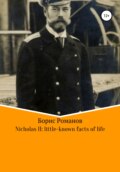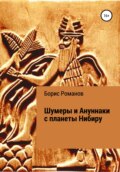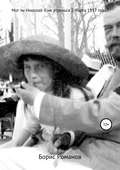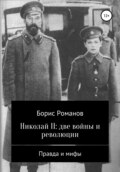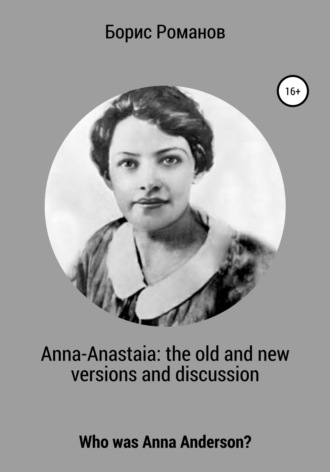
Борис Романов
Anna-Anastaia: the old and new versions and discussion
In connection with these studies of American journalists, we are interested in the statement of the Russian Orthodox Church Patriarch Kirill on July 26, 2012. I quote from the post agency Interfax:
“Kiev, July 26, 2012. Interfax – The Moscow Patriarchate might reconsider its attitude toward what is widely believed to be the remains of Russia's last Emperor Nicholas II and members of his family and entourage, which were found at the site of their shooting near Yekaterinburg and were buried at the Imperial Burial Vault at the Cathedral of the Peter and Paul Fortress in St. Petersburg in 1998.
"I would like to announce very important information we have received from New York, which is related to the circumstances of the royal family's death. I believe these circumstances will help us determine our position, among other things, on the so-called Yekaterinburg remains. I will provide you with the relevant materials, and we will have to discuss this and make the necessary decision," Patriarch Kirill of Moscow and All Russia said in opening a conference of the Russian Orthodox Church's Holy Synod in Kiev on Thursday.”
See http://www.interfax-religion.com/?act=news&div=9586
Some commentators believe that this statement of the Patriarch due precisely to the archives, which investigated Summers and Mangold in the U.S. (with the "Perm track" of tsar's daughters).
Last known statement of ROC (in 2013 ) is the following:
“Russian Orthodox Church still doubts authenticity of Russian royal family remains
Moscow, August 9, Interfax – The head of the Moscow Patriarchate Department for Church and Society Relations Archpriest Vsevolod Chaplin has said that the Russian Orthodox Church still has doubts regarding secular experts' conclusions that the human remains found near the city of Yekaterinburg belonged to the Russian Imperial Family members.
"In my opinion, a very wide range of competent experts, not necessarily just Orthodox experts, should be allowed to study the discovered remains," Father Vsevolod said.
It is important both to compare the DNA of some individual fragment with the DNA of the remains of other Imperial Family members, assess the wholeness of the skeletons, establish whether or not all of the found human remains have the same DNA and confirm the presence of former injuries, for example the injury that was sustained by Tsar Nicholas II during his trip to Japan when he was the heir to the Russian throne, the archpriest said.
There is also a need to compare different theories describing how the bodies were disposed of and buried, he said.”
See http://www.interfax-religion.com/?act=news&div=10702
Version of the rescue on the night of July 17, 1918 in Yekaterinburg.
(based on Vladimir Momot's articles on his page http://proza.ru/avtor/annaanastasia , with my comments)
1. During one of the sessions of Supreme Appeal Court in Senate of FRG on Anna Anderson’s case, a tailor from Vienna Henry Kleybenzetl bore his testimony. He presented his identity card and documents, confirming that in July 1918, he had been living in Yekaterinburg, where he had been an apprentice of tailor Baudin. A building where Baudin lived, was located near Ipat’ev’s house and Kleybenzetl often had to fix outfits of soldiers who were guarding tsar’s family. In the night on the 17th of July soldiers brought wounded Anastasia in Baudin’s house, and he together with master’s wife Anna had to look after the Duchess. In the morning “red guards” came in the house, but they “knew the owner too well to raid the house”. They announced that Anastasia had disappeared. On the third day the guard came for Anastasia – the one of those who had brought her.
See http://proza.ru/2008/08/15/195 (CDPOSR /Center of Documentation of public organizations of Sverdlovsk region/, F.41. In.1. D. 151. Sh.10-22)
2. New information about soldier by surname Tchaikovsky, and a searches of Anastasia by Cheka on the border with Romania in 1918.
As established in 2008 in Yekaterinburg by the researcher V. Momot ([http://proza.ru/2008/08/15/195 V. Momot. "The Night Without Dawn»]), the protection of Ipatiev House in Yekaterinburg since May 18, 1918. also included on two soldiers from several companies of 1-st Ural Infantry Regiment (regiment commander – ex. Col. Ivan Vranitsky) – and among them was a soldier of the 1-st company Tchaikovsky or Gaykovsky (as in the regimental documents of the Russian State Military Archives (RSMA) found both versions surname)[Russian State Military Archive: RSMA F.3576. Op.1.D.46. L. 60ob. , RSMA F.3576. Op.1.D.44. L. 20ob.].



